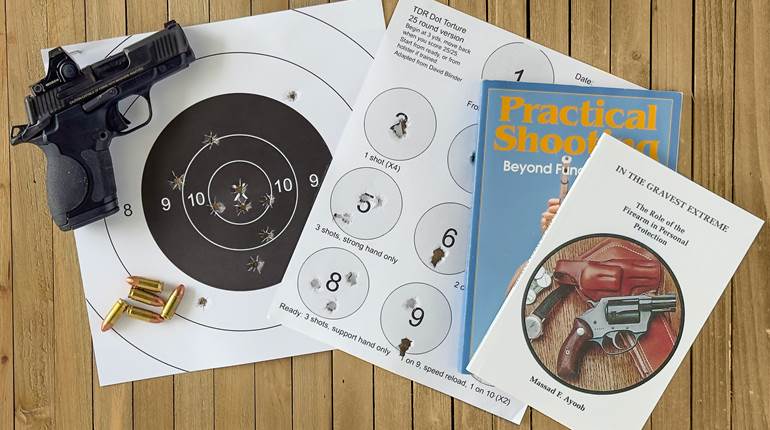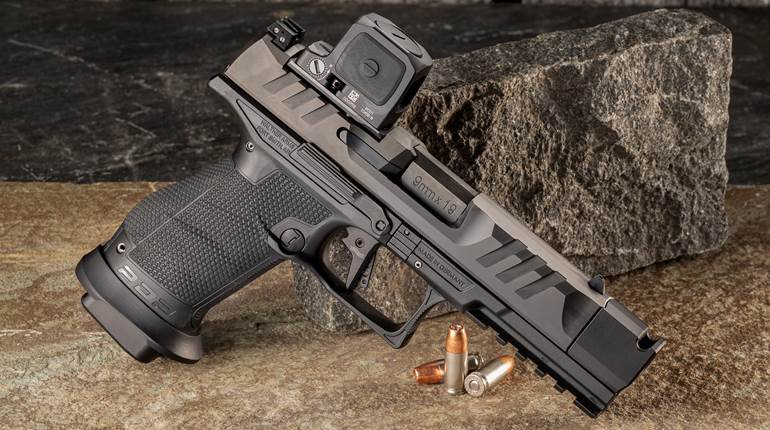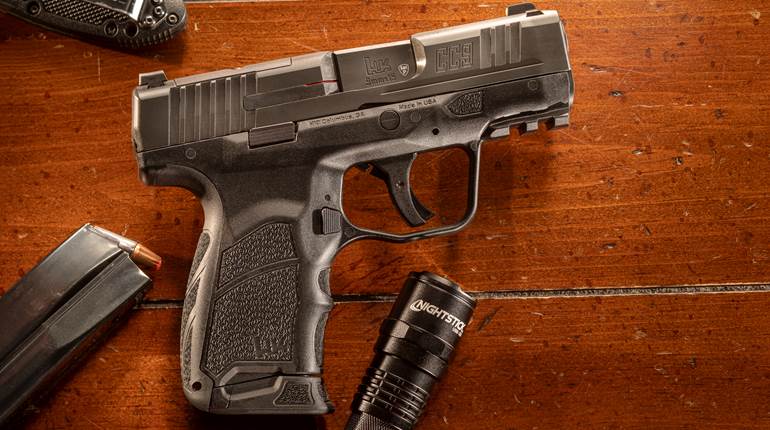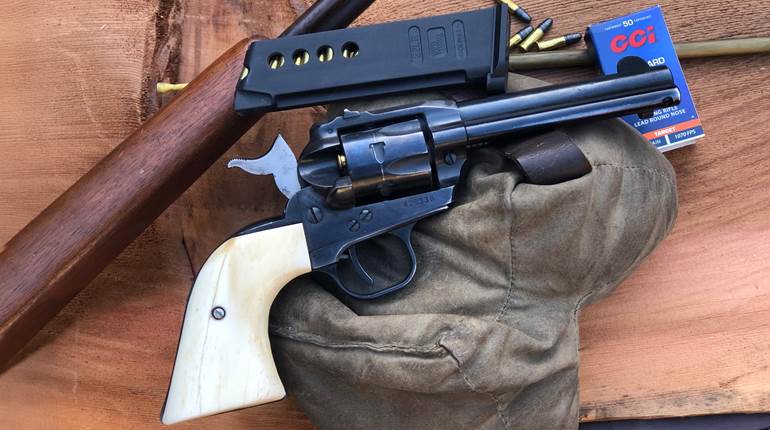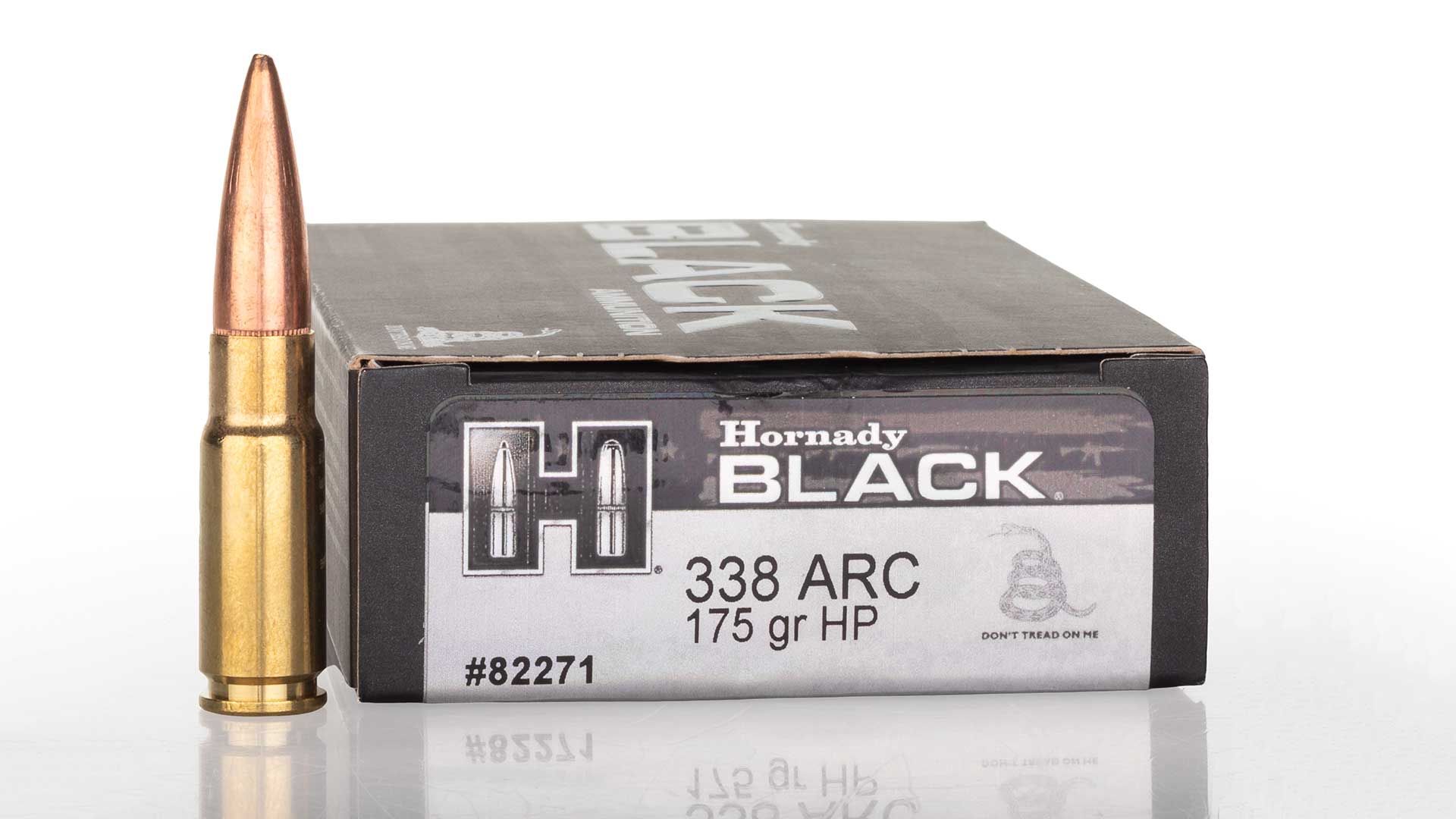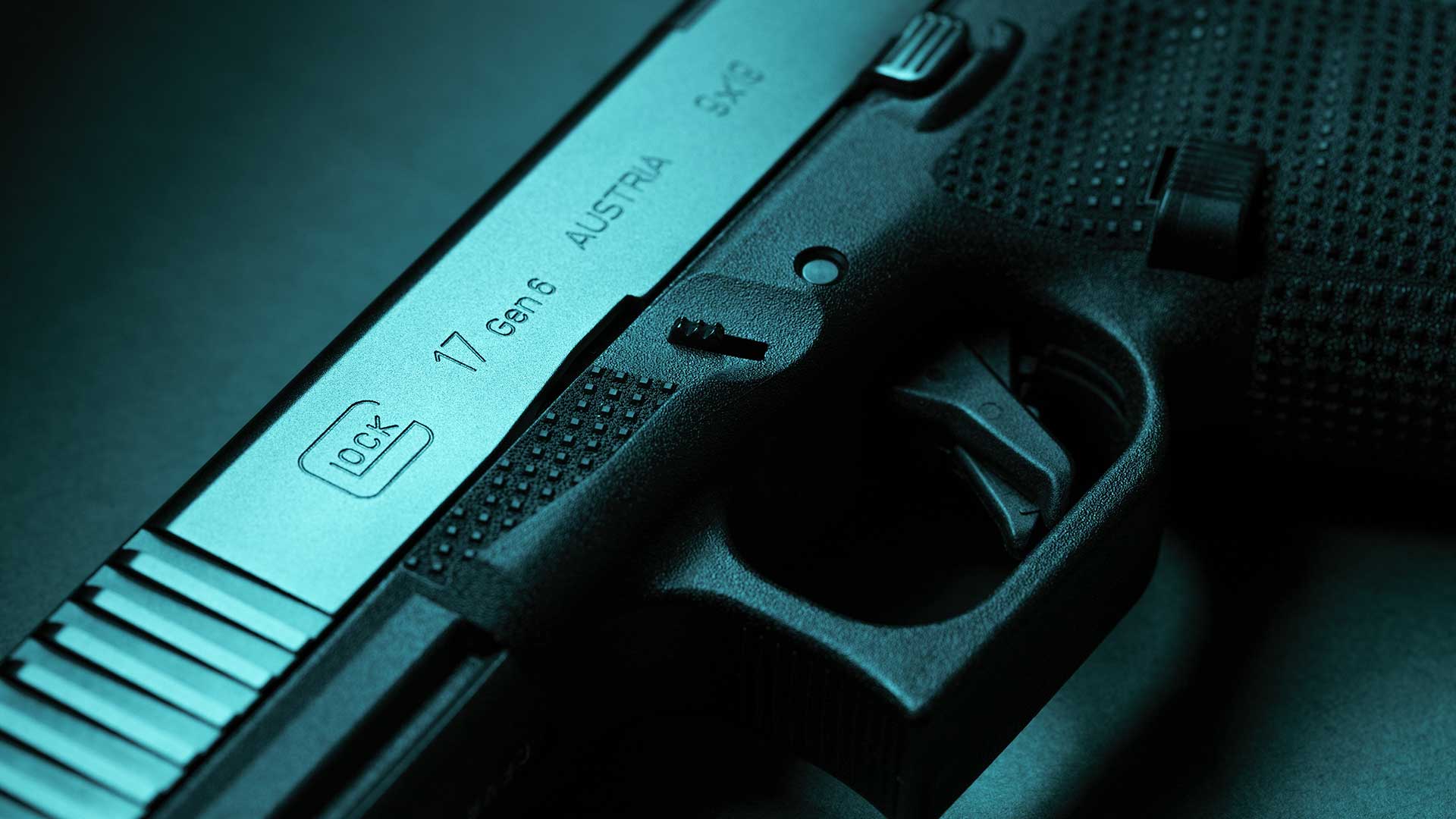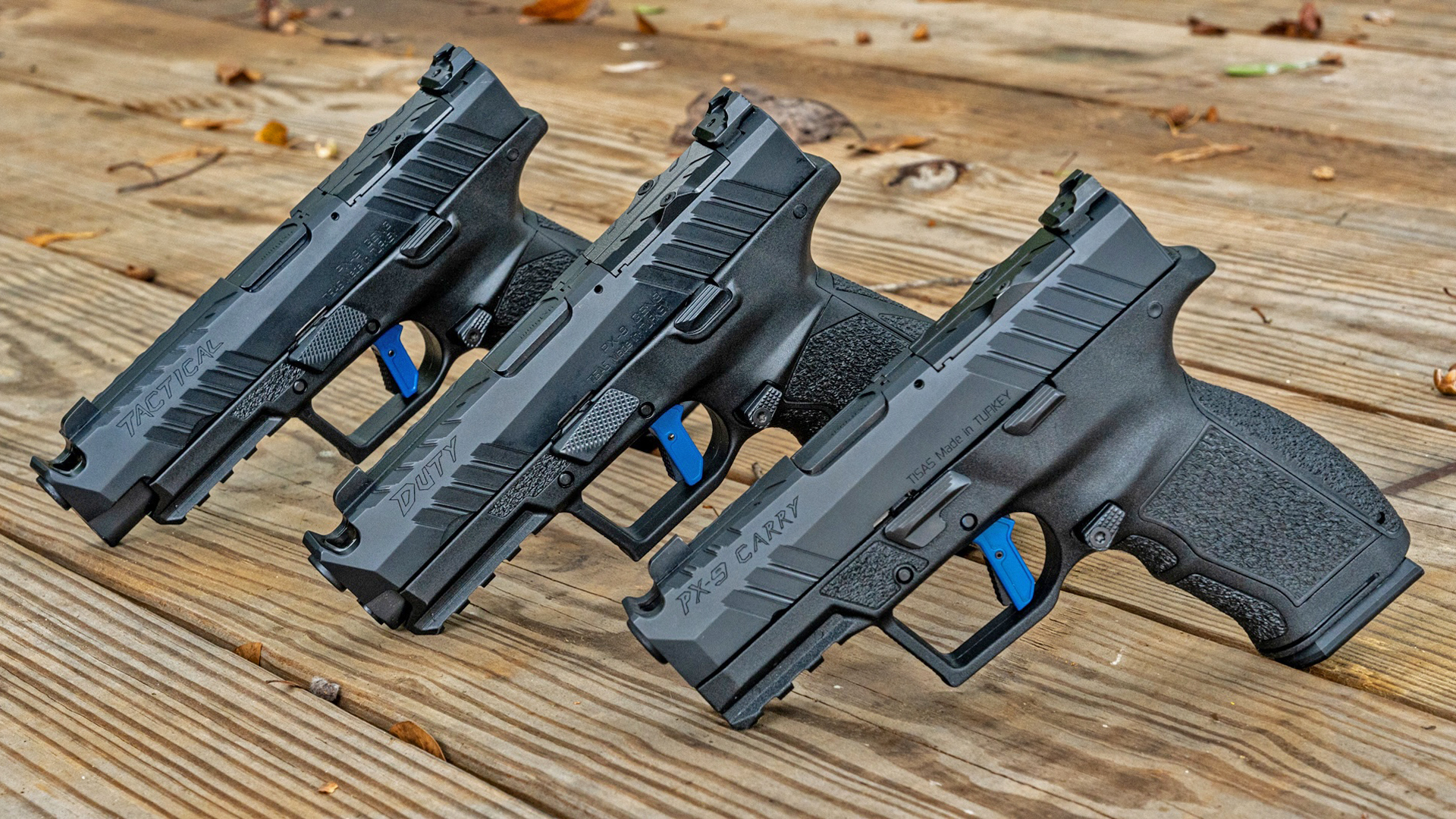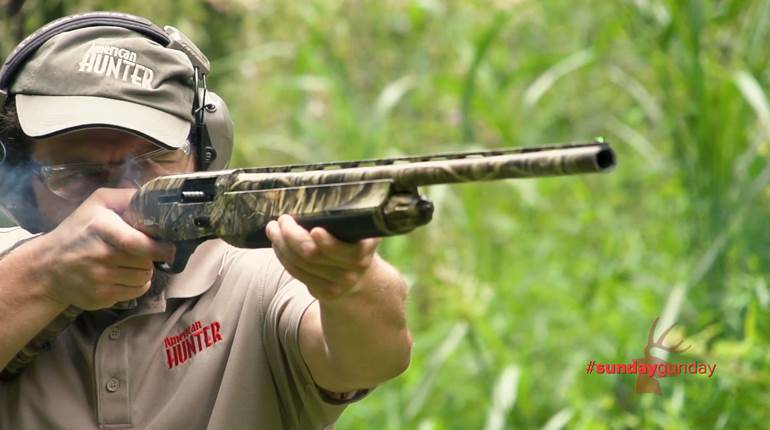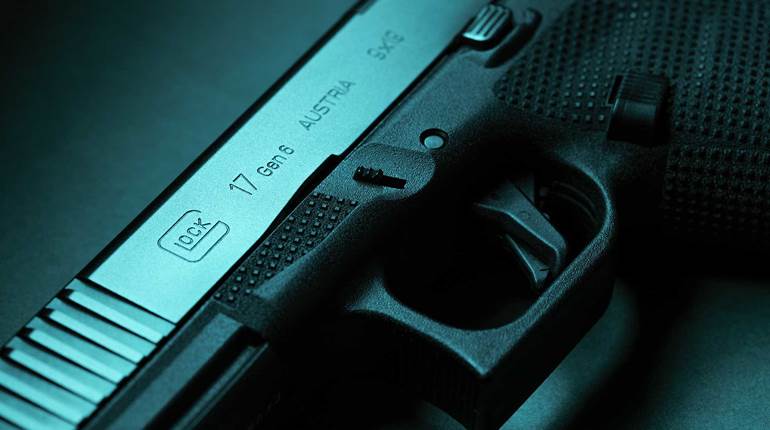
Once someone has reached initial comfort with firing a handgun accurately, they often struggle with achieving similar results under time pressure. Others may be quite strong at firing precise shots when the handgun is aimed at the target, but they struggle to replicate that performance when coming from the low-ready or from the holster. These are common issues, which require focused attention to overcome and, later, regular attention to keep sharp. With this in mind, I developed a drill to exercise accuracy under the most common applications while under time pressure. I call it "Prep Time," and it has become a favorite staple in my own practice and with shooters I am coaching.
Prep Time has four strings of fire, each fired twice for a total of just 10 rounds. The target is a simple 3"x3" Post-It note; the ubiquitous ‘yellow sticky’. The baseline distance is 10 yards, scalable for the skill of the shooter or their armament. I like to center the sticky in the head of an IDPA or USPSA silhouette target, but it can be stapled or glued on any target backer. Do not rely on the glue on the note itself, as the bullet’s impact will often send it fluttering in the breeze and interrupt your perfect string.
 Prep Time consists of four strings fired twice for a total of only 10 rounds, exercising a number of skills with little ammunition.
Prep Time consists of four strings fired twice for a total of only 10 rounds, exercising a number of skills with little ammunition.
At a glance the strings of fire are:
- One shot, one second time limit: aimed in on the target with the finger on the trigger.
- One shot, two second time limit: from the low ready.
- One shot, three second time limit: draw from the holster.
- Two shots, four second time limit: draw from the holster.
The time limits neatly divide the general shooting population. On one side are the many shooters who may find real challenge and pressure applying the accuracy they are otherwise capable of inside of these ‘realistically demanding’ time frames. Across the fence lie those shooters who love to shoot fast and may struggle to use the allotted time to clean the shot up enough to hit such a demanding target.
Performance Tips
Some points through each of the strings are worth talking through. String one seems to be a gimmick, but it isn’t. Even though the shooter is fully aimed in, finger on the trigger and waiting for the target to turn or the timer to beep that first shot is a test of discipline. Many shooters will crash through the trigger with insufficient support-hand grip to counter that force and cut a clean, frustrating hole low or left of the square. This result is often well short of the allowed one second, with the shots often in the quarter to half second range.
With modest reflection, the shooter finds that they need to tighten their support-hand grasp, put slightly more directional finesse into the trigger finger’s compression, and slow down a blink or two. One of the big takeaways for many shooters on this string is just how much time a second can be in this context.
String two begins from the low-ready position. Depending upon the shooter's preference (or department policy) they may start with the muzzle either pointed below the ‘waistline’ of the silhouette or at the ground below the target. Success here is greatly helped by consistency in how the shooter snaps the pistol up to the sticky and in cleanly taking up any slack in the trigger.
 The 10-yard results translate well to extended ranges. Firing Prep Time strings with nearly identical times and effort with results at 10 yards with the Walther PDP.
The 10-yard results translate well to extended ranges. Firing Prep Time strings with nearly identical times and effort with results at 10 yards with the Walther PDP.
Three seconds to draw and fire one shot from the holster sounds generous, but there is something about string three, where you may find that the sticky suddenly seems to have shrunken smaller or moved farther away. A common error here is for shooters to move slowly and deliberately at the initiation of the draw. If you move aggressively on the front half of the draw stroke, there is plenty of time to be deliberate on the back half as the front sight or red dot moves into the 3"x3" square.
The same aggressive initiation applies equally to the pair of shots from the draw on string four. Most shooters will also find that if they consciously apply more pressure in their support hand grasp on the pistol that the pistol will recover much more quickly into the sticky note and allow adequate time to break a second clean shot.
An adjustment which pays off in each of the strings from the holster is for shooters to mind their body alignment. If the drawstroke is presenting the pistol to either side of the target’s head, then time is being lost to steer the sights into the 3" square. The target size is specific enough that shooters’ natural point of aim must be correspondingly precise. The effort to learn how to find and apply a very specific body alignment with the intended target is a takeaway that transcends success on this drill and applies broadly.
‘Prep’ Work For Longer Ranges
Among the things I like about the Prep Time drill is how well it scales to greater distances. The recent Indiana mall shooting where Elisjsha Dicken stopped an active shooter with well-placed shots at extended range has many shooters interested in accuracy at distance. Prep Time results at 10 yards on the sticky tend to scale neatly to hits within the silhouette headbox at 20 yards or onto a reduced-size silhouette at 40 yards.
To illustrate, I recently shot Prep Time with a Walther PDP full size and then immediately stepped back to 40 yards and fired the same strings or time limits on a Defense Targets reduced steel silhouette. My times on each string were similar between the two distances, and the relative stability of the Holosun red dot and how cleanly I broke the shots were for all practical purposes identical. The 40-yard hits had a tight cluster of most shots well centered and a few hits more toward the edge of the target, closely matching the 10-yard results on the sticky.
Variations
Ten yards on the little stickie can be a slog with some of the micro-class pistols, so I step forward to about 8 yards. This is still far enough that it represents a somewhat long shot to such a small target but is within reach for the popular micro-nines that are carried by so many. Results with my Langdon Tactical customized Springfield Armory Hellcat at 8 yards match up closely to the easier to shoot, full-size duty pistols at 10 yards.
 Prep Time is an excellent challenge with Micro class 9 mm handguns like this LTT custom Hellcat.
Prep Time is an excellent challenge with Micro class 9 mm handguns like this LTT custom Hellcat.
For shooters who have a snubbie or a pocket gun that they are still learning to shoot well the distance might be decreased to 5 to 6 yards. The heavy double-action trigger stroke combined with skimpy stocks on many snub-nosed .38 Spl. revolvers can make this drill particularly challenging. Pocket-class .380 ACPs can be nearly as challenging. In either case, I would start at 5 or 6 yards and build toward being able to tackle the drill at 8 yards. For shooters who enjoy a sharper challenge, the Prep Time can be fired as described but strong hand only at 7 to 8 yards. Few drills will so rapidly give the shooter such a clear appreciation for trigger control with the single hand.
What Is Good?
The Prep Time is meant to be challenging, so do not be discouraged if the first few attempts hurt your feelings a little. The drill does well at pointing a shooter toward where some remedial effort and focus is required. All shots within the headbox and half within the 3" square would be a good starting point. After some improvement, seven hits is a solid result and could be called ‘passing,’ if you will. Eight hits is professional-level work, and nine is excellent in most any crowd. Ten hits is a worthy stretch goal and achievable. The first time a shooter punches 10 hits, they can absolutely be forgiven if they want to stop for a moment and soak it in.












